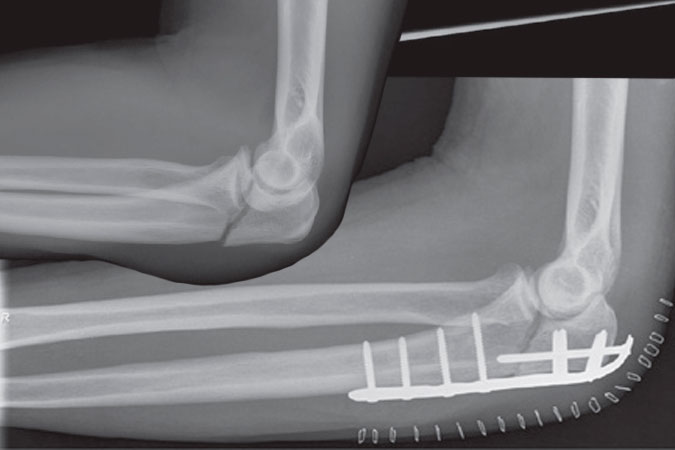Understanding Bone Fractures: Causes, Types, Healing, and Treatment
This article provides an in-depth look at bone fractures, starting with the reasons they occur, both in normal and osteoporotic bones. It details the unique types of fractures that occur in children’s developing bones, often termed as “greenstick” fractures. The article explains the body’s natural healing process post-fracture, highlighting the formation of a blood clot, a jelly-like matrix, and eventually, a callus across the fracture site. It then discusses the need for fracture line reduction in treatment, which could require a plaster of Paris cast or, in some cases, internal or external fixation. The piece concludes by underscoring the continuous advancements in medical science that aim to improve fracture treatments and recovery times.

Fracture of the ulna
Bones are the sturdy framework that provides structure and support to the human body. Despite their toughness, they are not impervious to damage. Fractures, or broken bones, are a common injury that can occur under certain circumstances. This article aims to shed light on the different types of bone fractures, how they heal, and the approaches taken for their treatment.
Causes of Bone Fractures
Fractures typically occur in normal bones subjected to abnormal load or stress, causing the bone to fail and break. However, fractures can also occur in bones of poor quality, as seen in conditions like osteoporosis. Here, a typical stress is placed on a bone that lacks the requisite strength to withstand the force, leading to a fracture.
Types of Fractures in Children
In children, whose bones are still developing, fractures can occur across the growth plate or the shaft of the bone. The shaft fractures in young ones often involve partial cortical disruption, akin to breaking a branch of a young tree. These are called “greenstick” fractures, given the similarity to the bend-and-snap break of a fresh, green stick.
The Healing Process of Fractures
The human body has a remarkable natural response to bone fractures – healing them. Following a fracture, a blood clot forms between the fracture margins, into which new vessels grow. This establishes a jelly-like matrix, enabling the further migration of collagen-producing cells. Upon this soft tissue framework, osteoblasts produce calcium hydroxyapatite, which forms insoluble crystals, and bone matrix is subsequently laid down. As more bone is produced, a callus forms across the fracture site, which is an important step in the healing process.
Treatment of Bone Fractures
The treatment of fractures involves the reduction, or realignment, of the fracture line. If the realigned bone cannot be maintained using a plaster of Paris cast, it might require more extensive measures. This could include internal fixation with screws or plates, or external fixation with rods, both designed to hold the bone fragments in place as they heal.

Fracture treatment is highly personalized and depends on several factors, including the type and location of the fracture, the patient’s age and overall health, and the patient’s lifestyle and activities. While some fractures can heal with rest and immobilization, others may require surgery and extensive rehabilitation.
Conclusion
Understanding bone fractures is essential, given their prevalence in society. From the causal factors, including normal stress on weakened bones or abnormal load on healthy bones, through to the natural healing process and various treatment methods, it is a complex yet fascinating aspect of human health. As medical science continues to advance, there is hope for even more effective and efficient treatments for fractures, helping individuals to return to their normal activities as quickly and safely as possible.












